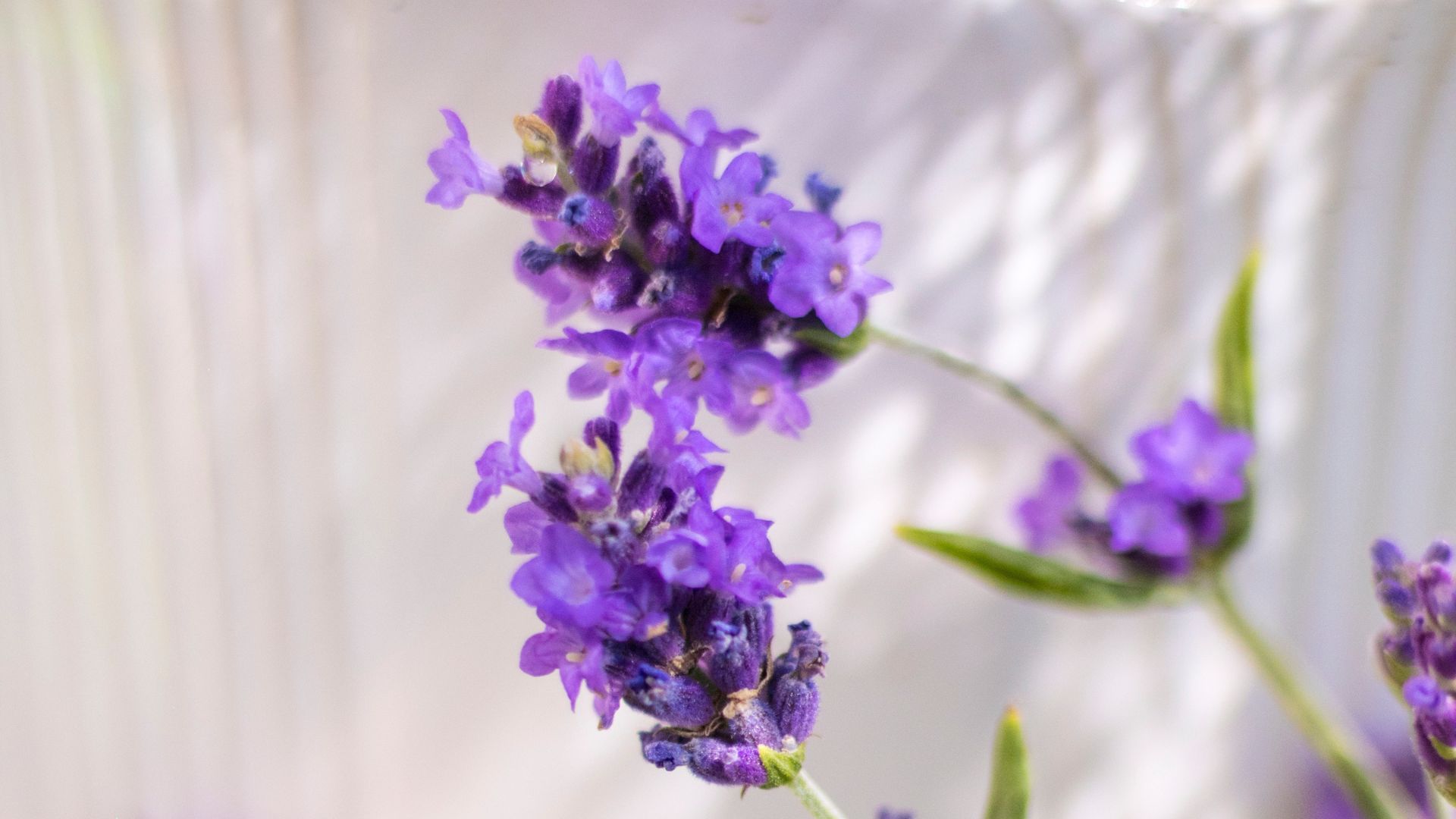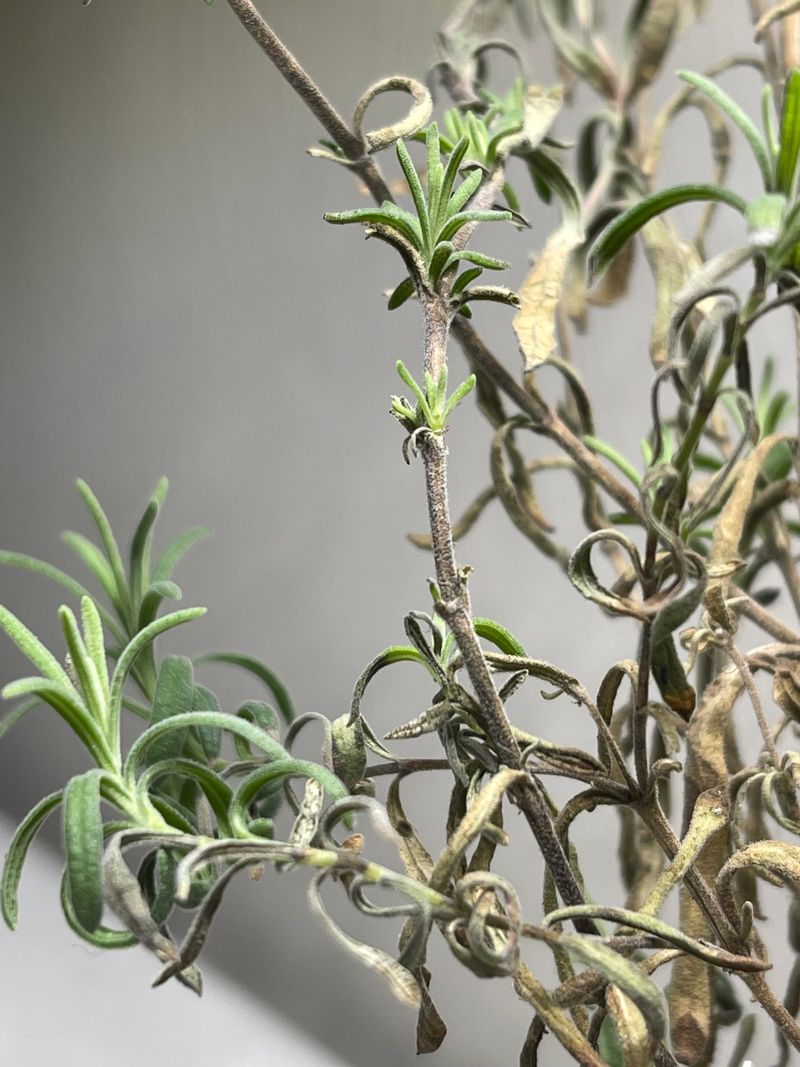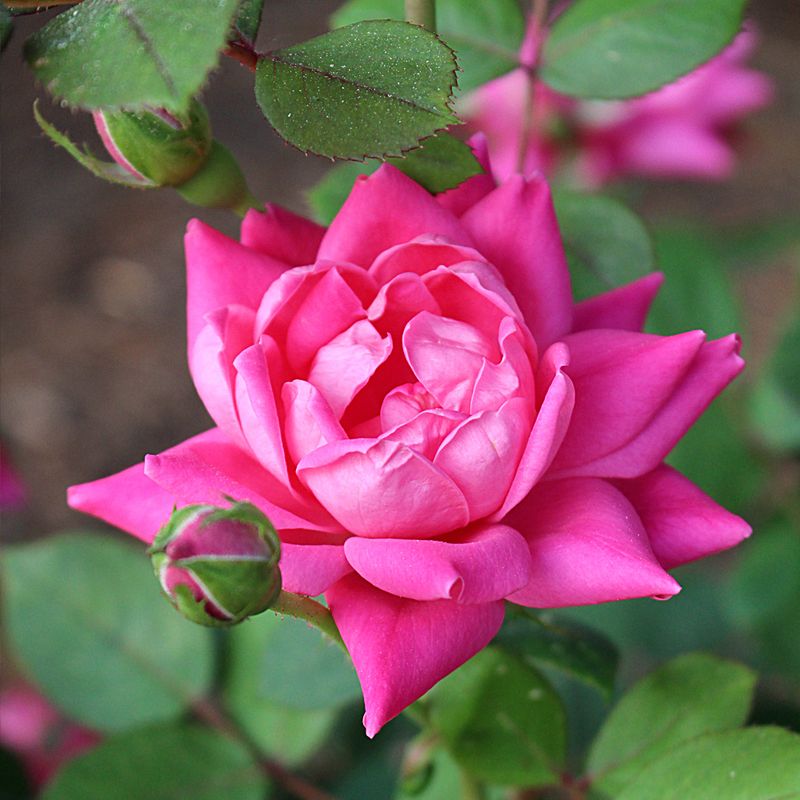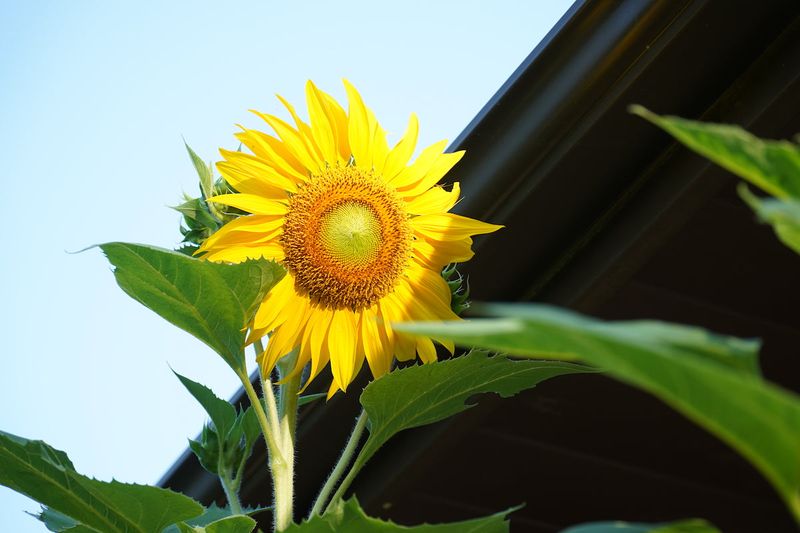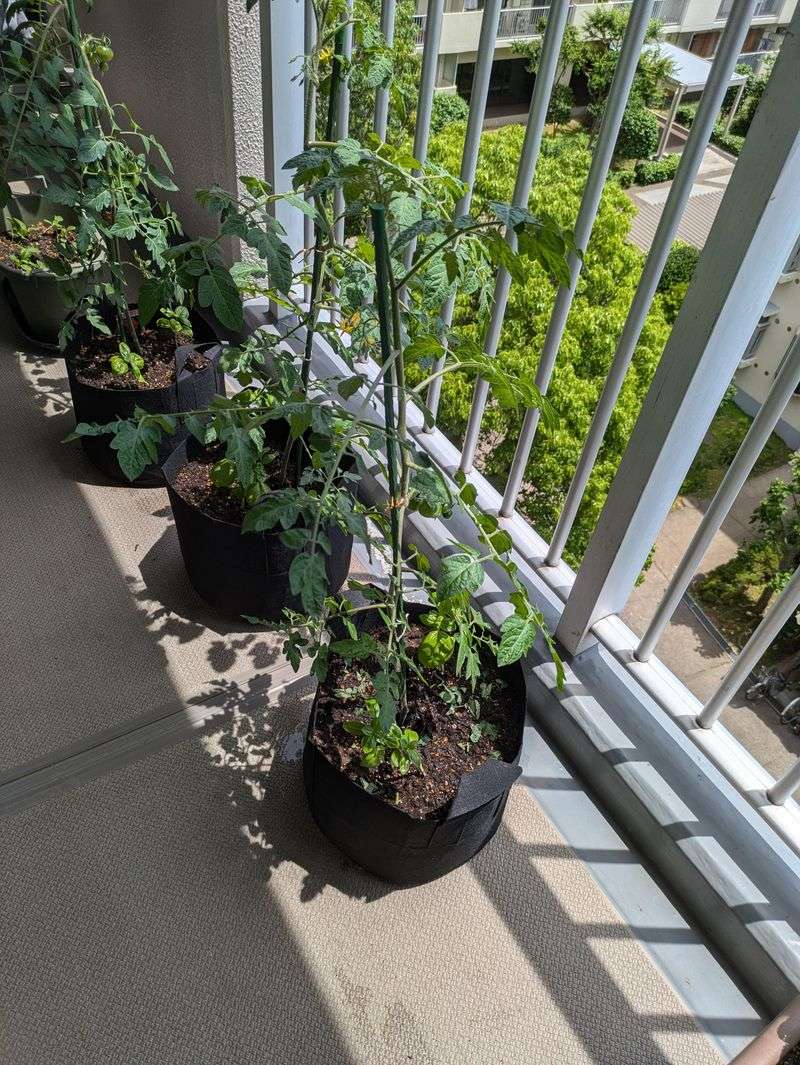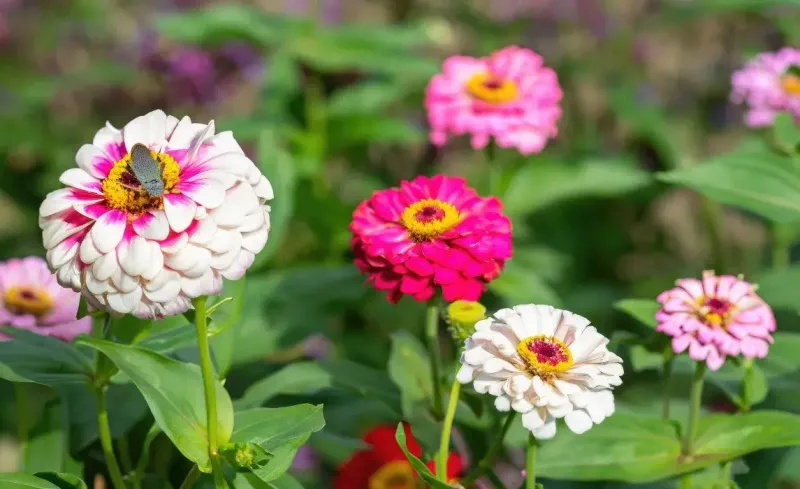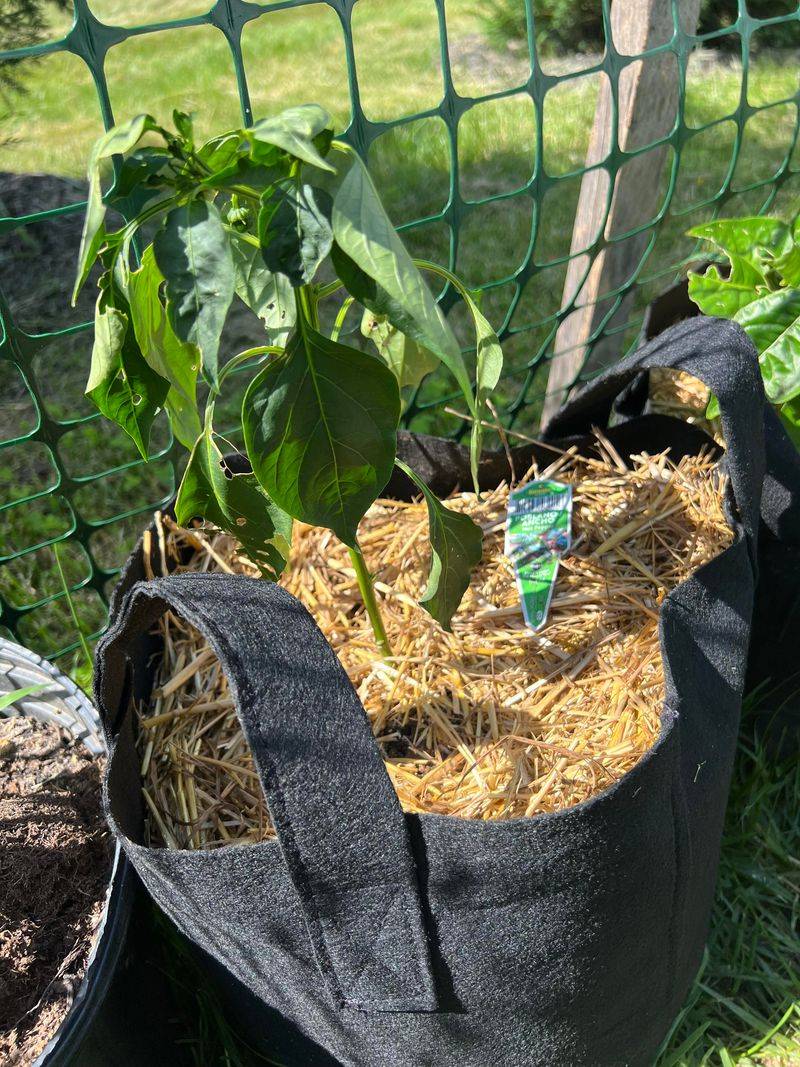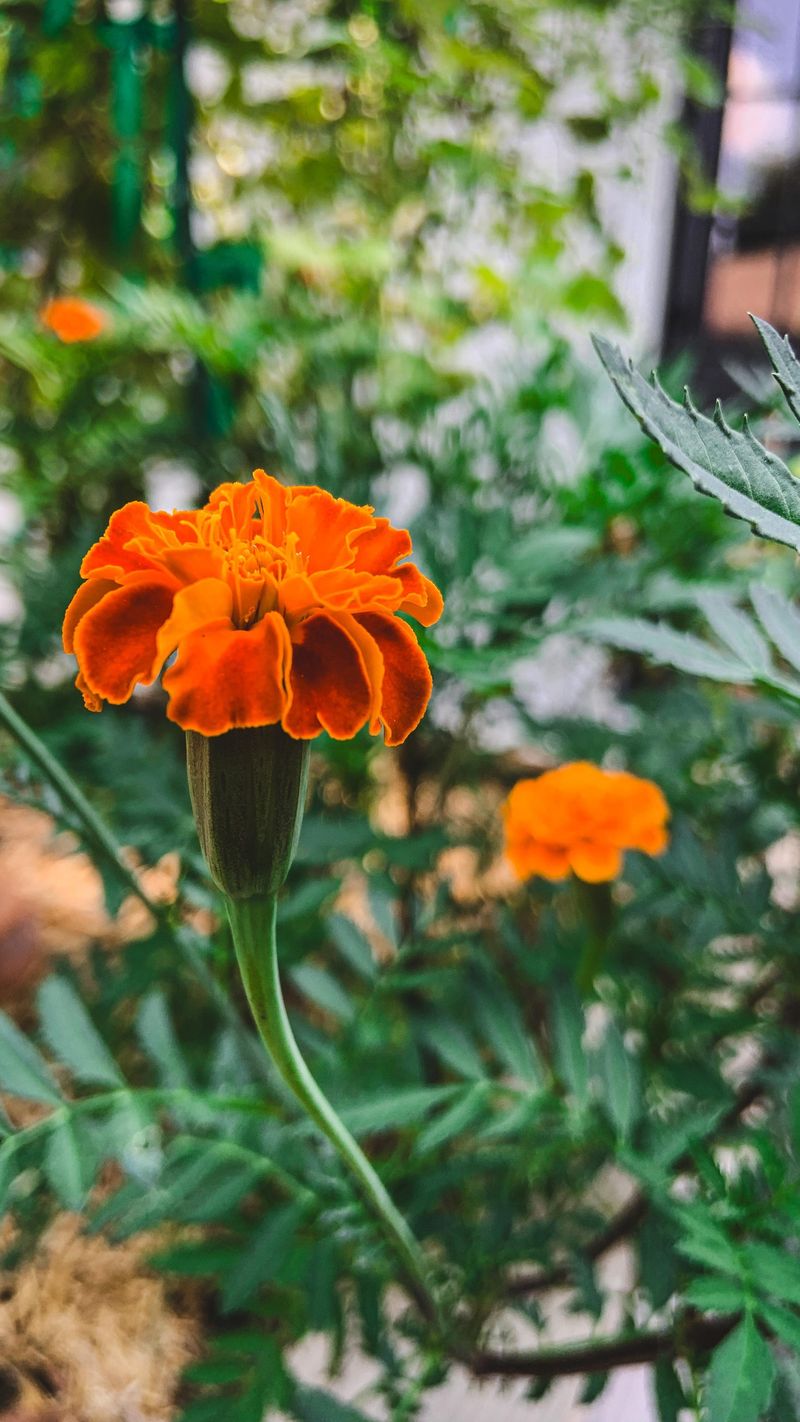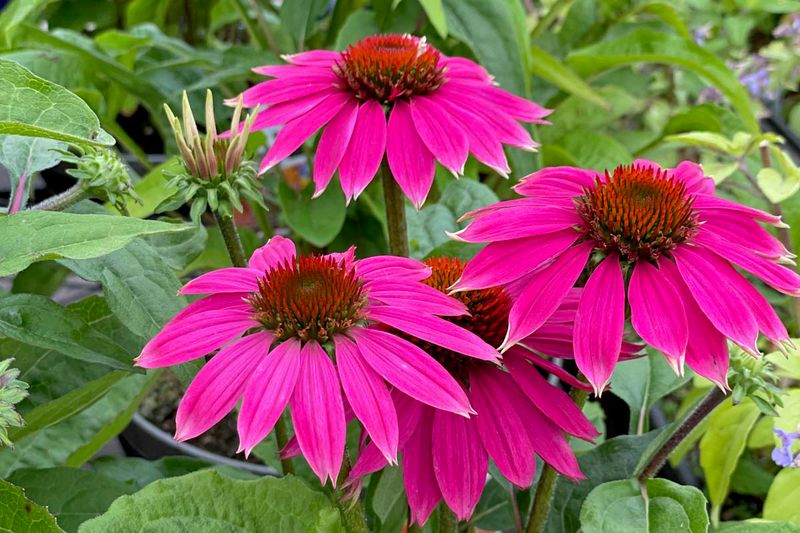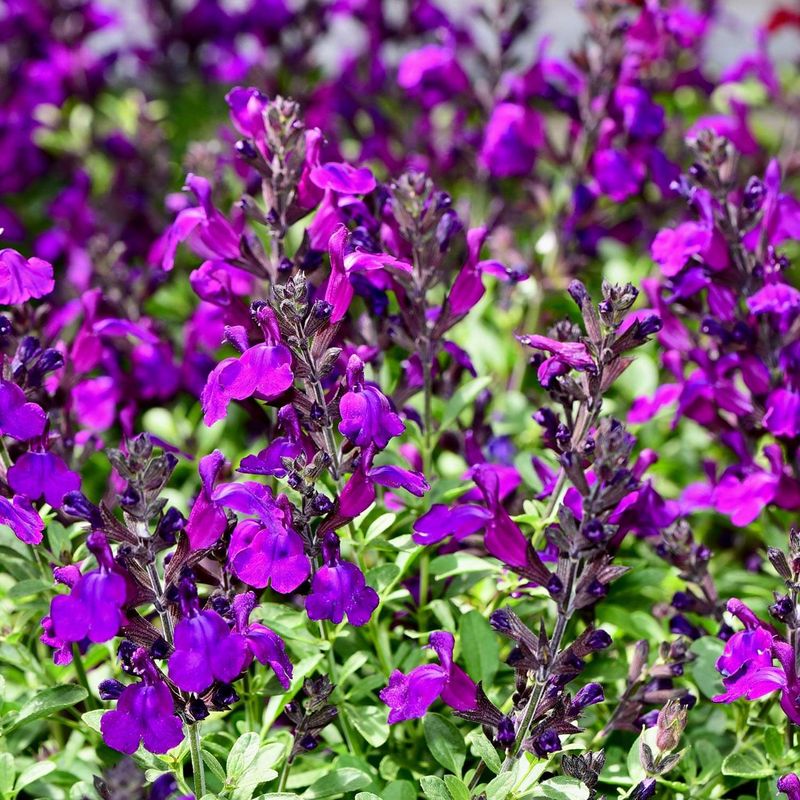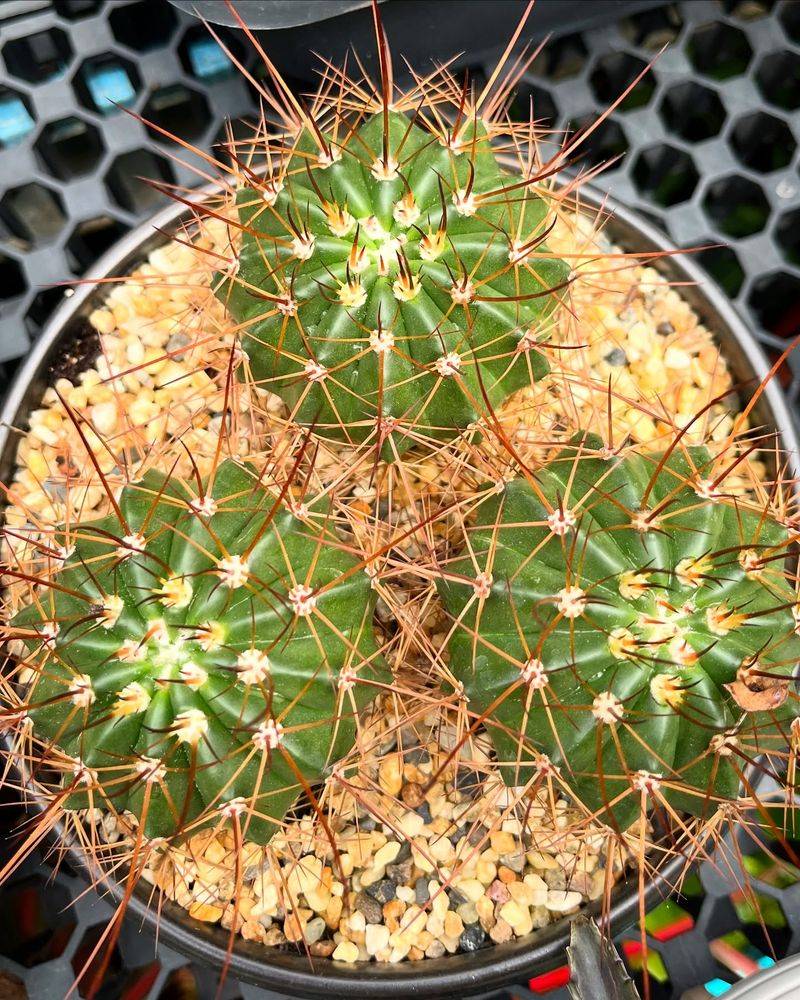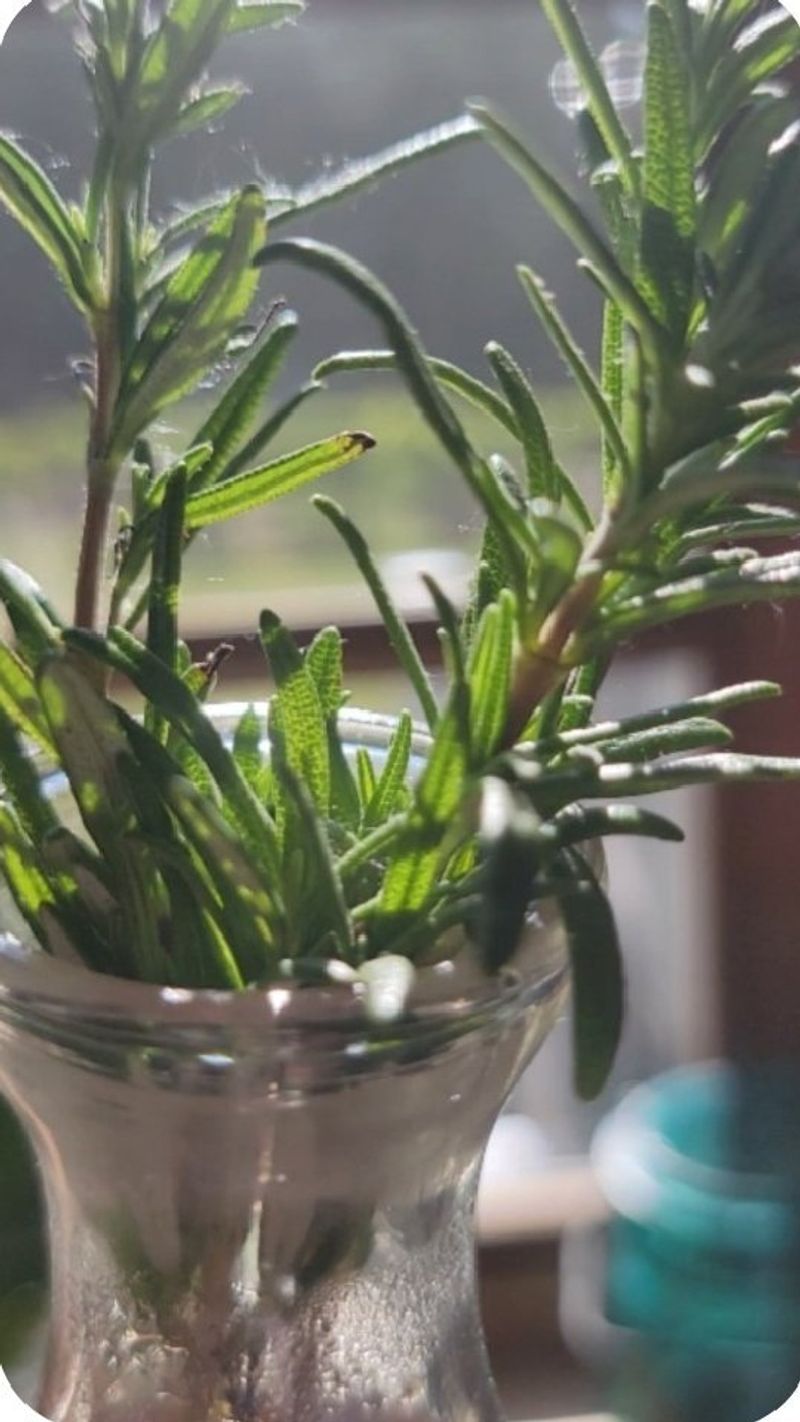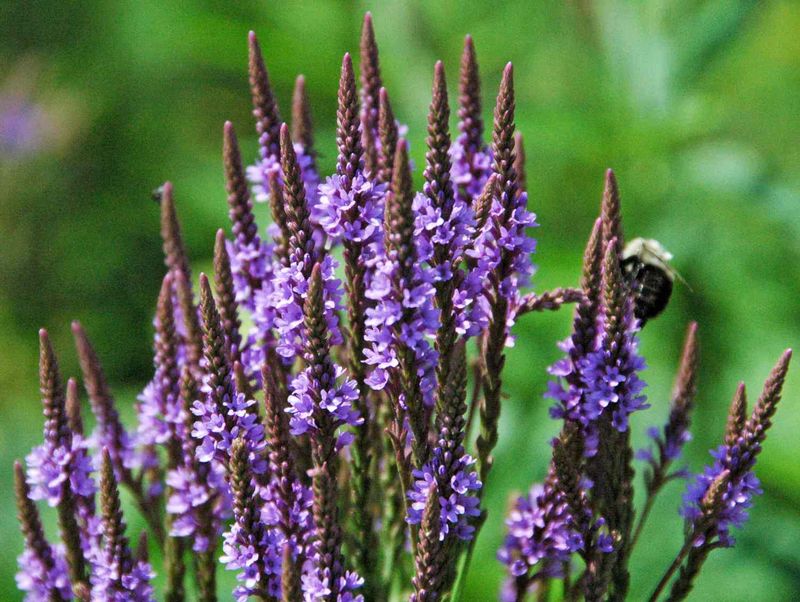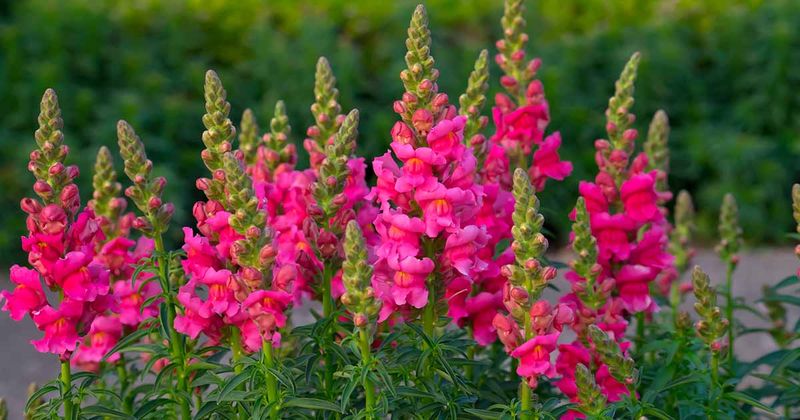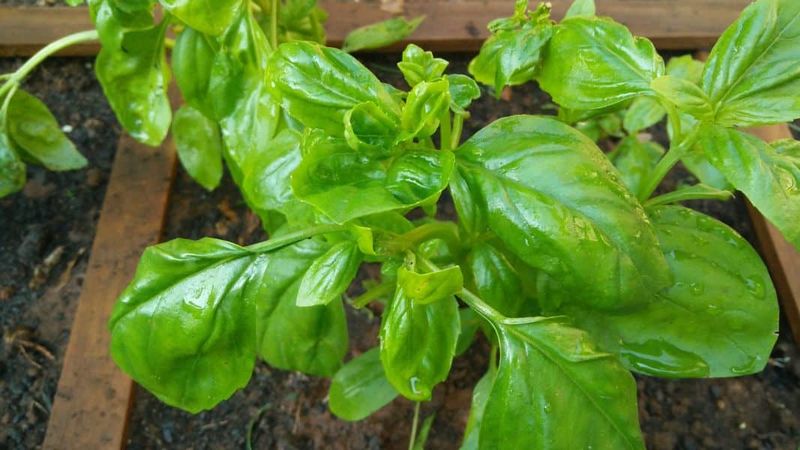Not all plants are built to thrive in the shade—some are downright dramatic about it. You could give them all the love in the world: the perfect potting mix, the right amount of water, even a pep talk or two—but without full sun, they’ll sulk, struggle, and eventually give up altogether.
If your patio or balcony doesn’t soak up a solid 6 to 8 hours of direct sunlight each day, it’s best to steer clear of these sunshine-hungry divas. Planting them in a low-light spot is like sending a beach lover to live in a basement—things go downhill fast.
So, before you fill your outdoor space with green dreams that aren’t made for the shade, take a look at which plants just won’t make the cut. Trust me, your future self (and your wallet) will thank you.
1. Lavender’s Light Demands
Those purple stems might look gorgeous in garden photos, but lavender has zero tolerance for shade. Mediterranean by nature, this herb evolved under intense sunshine and will simply give up if placed in a spot that doesn’t match its homeland brightness.
When deprived of full sun, lavender stretches awkwardly toward any light source, developing weak, spindly stems that can’t support themselves. The signature fragrance fades, leaves turn yellow, and you’ll notice almost no flower production as the plant focuses all energy on survival.
If your patio gets less than six hours of direct sun, save yourself the disappointment and choose shade-tolerant herbs like mint or lemon balm instead. They’ll give you the aromatic experience without the sunlight drama.
2. Roses Require Rays
Many gardening dreams have been crushed by trying to grow roses in shade. Despite what romantic movies might suggest, these classic blooms are demanding sun-seekers that become disease magnets when placed in partial shade.
Without adequate sunlight, roses develop black spot, powdery mildew, and other fungal problems almost immediately. The few flowers that manage to form will be small and quick to fade. Stems grow thin and stretched, creating a plant that looks nothing like the robust bush you envisioned.
Rather than fighting this losing battle, consider shade-friendly flowering shrubs like hydrangeas or camellias for your low-light patio. They’ll provide similar structural beauty and flowers without the constant disappointment.
3. Sunflowers Living Up To Their Name
Ever notice how wild sunflowers always face the sun? That’s not just a cute trick—it’s a survival necessity. These iconic summer plants track the sun’s movement across the sky because they’re completely dependent on maximum light exposure.
In shade, sunflowers become the saddest sight in gardening. They develop extremely thin stems unable to support their heavy heads. Growth slows to a crawl, and the few flowers that develop are tiny, pale versions of what they should be. Most often, they simply fail to bloom at all.
For shaded patios, try planting columbines or bleeding hearts instead. These woodland natives naturally thrive in dappled light and will bring cheerful blooms without the sunflower’s impossible demands.
4. Petunias Perish In Shadows
Garden centers sell petunias by the truckload each spring, but they rarely mention these colorful annuals are practically solar-powered. Without direct sun hitting their leaves for at least 6 hours daily, petunias quickly become shadow of their potential.
The first sign of trouble is leggy, stretched growth as the plants desperately reach for any available light. Flowering slows dramatically, with blooms becoming smaller and fewer. The vibrant colors fade, and the plants become magnets for pests and diseases that healthy, sun-bathed petunias would easily resist.
For colorful containers in shadier patio spots, begonias and impatiens offer similar visual impact without the sunlight requirements. They’re specifically bred to bloom beautifully with minimal direct light exposure.
5. Tomatoes Turn Troublesome
Weekend gardeners often make the mistake of tucking tomato plants into partly shaded patio corners, hoping for the best. Unfortunately, these popular edibles are among the most sun-dependent plants you can grow, requiring a minimum of 8 hours of direct light.
In insufficient sunlight, tomato plants grow tall and spindly with few branches and even fewer fruits. The plants focus on stretching toward light sources rather than producing flowers. Any tomatoes that do develop ripen slowly, taste bland, and are more susceptible to rot and cracking.
For edible gardening in shadier patios, leafy greens like lettuce, spinach, and kale make much better choices. They actually prefer protection from intense afternoon sun and will reward you with harvests where tomatoes would fail.
6. Zinnias Zip Out Quickly
Budget-friendly and typically easy to grow, zinnias trick many gardeners into thinking they’ll work anywhere. The seed packets rarely emphasize their absolute requirement for full, direct sunshine throughout the day.
When planted in shade, zinnias respond with dramatically slowed growth and stems that stretch unnaturally between leaf nodes. The signature bright, bold flowers either fail to form entirely or appear as small, washed-out versions. Mildew quickly covers the foliage, turning what should be a colorful display into a sickly mess.
For similar cut-flower potential in partial shade, try astilbe or foxglove instead. Both produce attractive vertical blooms that can brighten shadier patio spaces without the sunlight demands of zinnias.
7. Peppers Perform Poorly
Hot sauce fans hoping to grow their own peppers on partly shaded patios are setting themselves up for disappointment. These heat-loving vegetables evolved in sunny, tropical regions and simply cannot manufacture enough energy in low light conditions.
Shade-grown pepper plants develop unusually large, thin leaves in a desperate attempt to capture more light. Despite this adaptation, they produce few if any flowers, and those that appear rarely develop into peppers. Any fruits that do form lack the heat, flavor complexity, and nutrient density of sun-grown peppers.
For container vegetable gardening in partial shade, try growing herbs like parsley, chives, or cilantro instead. These culinary staples tolerate lower light levels while still providing fresh flavors for your kitchen.
8. Marigolds Miss The Mark
Garden shops promote marigolds as foolproof flowers, but that claim comes with an unmentioned asterisk: *requires full sun. These popular annuals evolved in the open meadows of Mexico and simply cannot adapt to shadowy corners.
Without adequate sunlight, marigolds quickly lose their compact form. The characteristic bright orange and yellow blooms either fail to appear or emerge small and pale. Their famous pest-repelling properties diminish too, as the plants can’t produce the same levels of protective compounds when light-starved.
For similar pest-deterring benefits in shadier spots, plant catnip or lemon balm instead. Both herbs naturally discourage certain insects and can thrive with just a few hours of direct morning sun.
9. Echinacea Exits Early
Native plant enthusiasts often assume that because coneflowers grow wild in meadows, they must be adaptable to various light conditions. The reality is these prairie natives evolved in wide-open spaces with unfiltered sunshine from dawn till dusk.
In shaded conditions, echinacea plants become shadows of their potential. The signature upright stance gives way to leaning, stretched stems that flop over. Flowering becomes minimal or nonexistent, and the plants are quickly overtaken by fungal issues like powdery mildew that spread across the foliage.
For native plant options that actually prefer partial shade, try woodland phlox or Jacob’s ladder. These indigenous beauties evolved at forest edges and bring similar pollinator benefits without the strict sunlight requirements.
10. Geraniums Gradually Give Up
Window boxes across Europe showcase geraniums, but look closely—they’re always in sunny spots. These popular container plants have become staples because they’re drought-tolerant and long-blooming, but those qualities only emerge with proper sunlight.
When placed in shade, geraniums initially seem fine but slowly deteriorate. New growth becomes stretched and weak, while flowering dramatically decreases. The plants become susceptible to botrytis (gray mold) that quickly spreads across leaves and stems.
For window boxes and containers in shadier patio areas, try fuchsias or New Guinea impatiens instead. Both offer similar dramatic blooms and trailing habits without requiring the intense sunlight geraniums demand.
11. Salvia Struggles Severely
Garden centers market salvias as drought-tolerant workhorses, but rarely mention their non-negotiable need for full sun. These Mediterranean-native plants evolved alongside lavender and rosemary in some of Europe’s brightest regions.
In shaded conditions, salvias lose their compact, bushy form and develop long, weak stems that can’t support themselves. The signature spikes of blue, purple, or red flowers either fail to develop or appear stunted and quick to fade.
For similar vertical interest in shadier patio spots, try planting astilbe or coral bells. Both offer attractive foliage and upright flower spikes that actually prefer protection from intense afternoon sun.
12. Cactus Crashes Quickly
Trendy interior design magazines often show cacti in all sorts of indoor corners, creating the false impression these desert natives can adapt to low light. In reality, no plants are more dependent on direct, intense sunlight than cacti and their succulent cousins.
Without adequate light, cacti first respond by stopping growth entirely. Then they begin to stretch and distort, developing unnaturally thin segments as they desperately reach toward any light source. The distinctive coloration fades, and the plants become soft and vulnerable to rot.
If you love the architectural look of cacti but have a shaded patio, try ferns or snake plants instead. Both offer strong structural elements and can thrive in the lower light conditions that quickly kill desert plants.
13. Cosmos Collapses Completely
Seed companies promote cosmos as perfect for beginners, but the fine print should read: “only in full sun.” These wildflower-like annuals evolved in open Mexican grasslands and simply cannot adapt to life in the shadows.
When cosmos don’t receive adequate sunlight, they quickly develop abnormally long internodes. The few flowers that manage to form are significantly smaller and paler than normal. Most often, the plants focus all energy on reaching toward light sources rather than flowering at all.
For a similar airy, wildflower aesthetic in partial shade, plant columbine or woodland anemones instead. These graceful bloomers naturally occur at forest edges and can thrive with just morning sun exposure.
14. Rosemary Retreats Rapidly
Herb enthusiasts often learn the hard way that rosemary’s aromatic powers come at a price: absolute devotion to sunshine. Native to the Mediterranean coast, this culinary favorite evolved in some of Europe’s brightest, driest regions. In shade, rosemary’s compact growth pattern quickly falls apart.
The plant develops long, weak stems with significant gaps between leaf clusters. The signature aroma and flavor compounds diminish dramatically, leaving you with bland-tasting herbs. Most critically, excess moisture around the roots in shadier spots leads to quick root rot and total plant collapse.
For fresh herbs in shadier patio spaces, mint, chives, or lemon balm make excellent alternatives. These culinary workhorses actually prefer some protection from intense afternoon sun and will thrive where rosemary fails.
15. Verbena Vanishes Visibly
Garden centers showcase verbena in hanging baskets each spring, but rarely mention its critical need for direct sunlight. These trailing bloomers evolved in sunny, open habitats and simply cannot generate enough energy in shadier spots.
When verbena lacks adequate light, flowering stops almost completely. The plants develop unusually long stems with large gaps between leaf nodes, creating a leggy appearance. The foliage loses its green color, turning pale yellow-green as chlorophyll production decreases. Fungal issues quickly take hold in the weakened plant.
For hanging baskets in shadier patio locations, try fuchsia or trailing begonias instead. Both offer similar cascading growth habits with abundant flowers, even in spots that receive minimal direct sunlight.
16. Snapdragons Snap Shut
Spring displays often feature snapdragons, but garden centers rarely emphasize their absolute need for bright, direct light. These cottage garden classics evolved in sunny Mediterranean meadows and cannot adapt to shadowy corners.
In insufficient light, snapdragons grow unnaturally tall and thin, unable to support their own weight. The signature densely-packed flower spikes either fail to develop or appear with just a few scattered blooms. Disease problems quickly take hold, with powdery mildew and rust spreading across the weakened foliage.
For similar vertical flower interest in partial shade, foxgloves make excellent alternatives. Their woodland heritage makes them naturally adapted to dappled light conditions where snapdragons would quickly fail.
17. Basil Barely Begins
Kitchen gardeners often try growing basil in whatever space they have available, including shady patio corners. Unfortunately, this popular herb requires at least 6-8 hours of direct sunlight to develop its signature flavor compounds and bushy growth habit.
In shade, basil plants grow unusually tall and sparse, with large gaps between leaf pairs and significantly smaller leaves. The distinctive aroma and flavor become weak and watery, hardly worth harvesting. The plants quickly succumb to fungal issues, particularly downy mildew that spreads rapidly across the foliage.
For culinary herbs in shadier patio spots, try growing mint, parsley, or cilantro instead. These kitchen staples naturally grow as understory plants in their native habitats and actually prefer some protection from intense afternoon sun.

